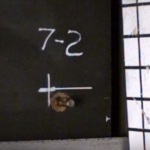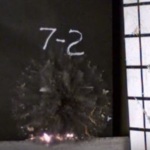Few things are as important to a country as its defensive capabilities. Sure, the technologies made for that defense, as long as they are developed by parties other than the state, are generally also available for other countries, but that doesn’t take away from the importance of developing new ways to stay alive.
Just like it happened with Kevlar, as it was accidentally discovered in an attempt to make better tires, a new defensive armor is currently being developed by a third party group. The researchers from the North Carolina State University just developed a metal foam armor that obliterates bullets on impact.
Made out of a material called composite metal foam, the armor can turn into dust even bullets meant especially for piercing armor; even a 7.62 x 63 millimeter M2 armor-piercing projectile turns into dust when colliding with the super-resistant armor.
A North California State University professor of mechanical and aerospace engineering involved with the project who spent years experimenting with such composite metal foams, Afsaneh Rabiei, says about the project: “We could stop the bullet at a total thickness of less than an inch, while the indentation on the back was less than 8 millimeters. To put that into context, the NIJ (National Institute of Justice) standard allows up to 44 millimeters indentation in the back of an armor […]. The presence of air pockets inside CMF [also] make it so effective at blocking heat mainly because heat travels more slowly through air than through metal”.
Extremely lightweight but far stronger than any traditional metal plating, the new material has far more potential uses than just acting as body armor, although its use there is far from contested. In fact, it might soon replace the typical body armors used by the military today.
This is because the composite metal foam could reduce the weight of these body armors by up to 20 percent, while simultaneously providing far better protection against bullets. Other military applications would be protecting vehicles from explosives and soldiers from hazardous materials.
Since the material can also support very high temperatures, protecting from fire and heat far better than traditional metal, it can also be used in transporting nuclear waste and even in deep space exploration. Expectedly, many are excited to get their hands on it and start experimenting by themselves.
Made out of a combination of metals and other materials like titanium, steel, stainless steel, and carbon, this type of metallic foam has only just begun being understood. Thanks to recent technological advancements, scientists can finally use these materials to save lives and to integrate them into other relevant scientific fields in the near future.
You can watch the short presentation video on youtube https://www.youtube.com/watch?v=lWmFu-_54fI.














